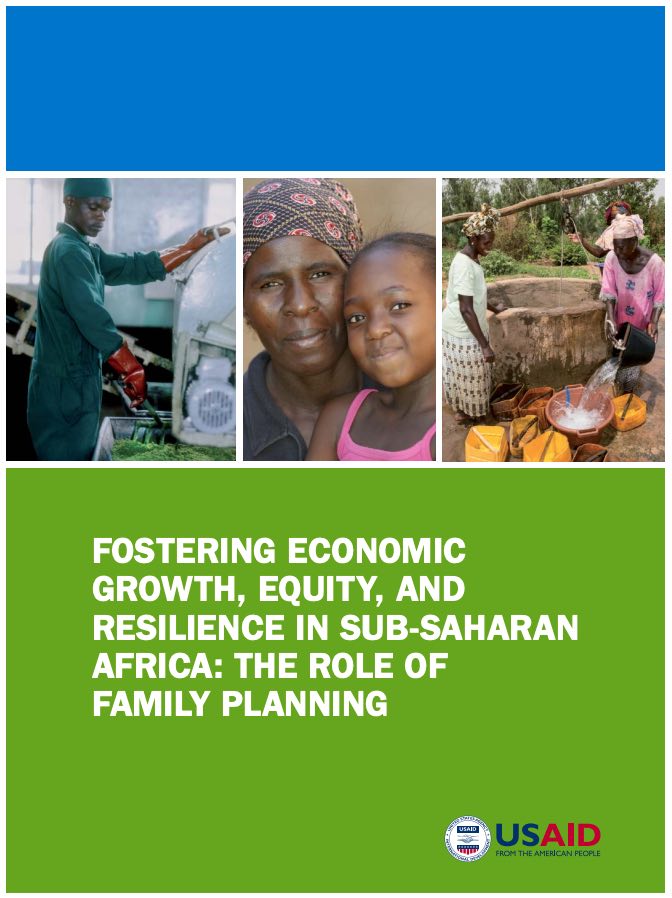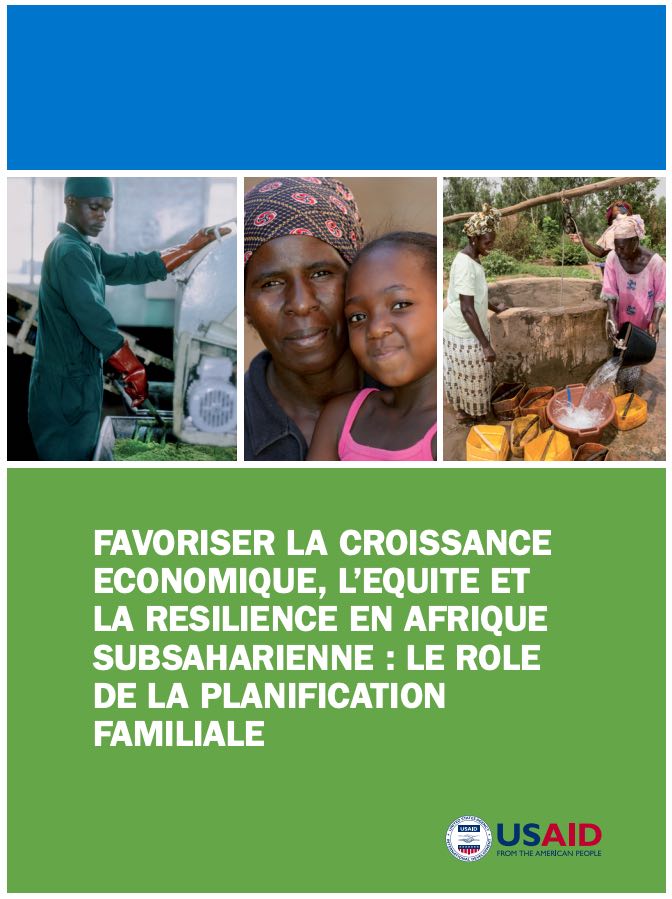
Fostering Economic Growth, Equity, and Resilience in Sub-Saharan Africa: The Role of Family Planning
Sub-Saharan Africa (SSA) will be the world’s greatest demographic player this century—its population will quadruple from 960 million to about 4 billion and it will account for almost 100 percent of the world’s estimated 2 billion increase in workforce. SSA could reap significant benefits from its growing population if the transition is well managed. “Ramping up family planning services today could make this transition easier,” reports Ishrat Husain, lead author and senior health technical advisor for the USAID Office of Sustainable Development, Bureau for Africa, “but making family planning a priority and keeping it integral to development will require an increased appreciation of its cross-sectoral benefits and a stronger engagement of multiple ministries.”
In the first decade of the 21st century, family planning programs in SSA languished and donor funding stagnated. The majority of countries made slow progress in modern contraceptive uptake. While family planning was widely credited with improving the health of women and children, few national leaders recognized the broader role of family planning in accelerating and sustaining national economic growth and fostering competitiveness in the global economy.
Today, there are encouraging signs that things are beginning to change. Many countries have made impressive gains in expanding the reach of their family planning programs. Innovative planning and advocacy tools are raising the visibility of family planning, helping policymakers and leaders recognize the multiple cross-sectoral benefits of family planning. This report explores those benefits—revealing how family planning could significantly affect SSA’s development in three key ways: strengthening economic growth and global competitiveness, advancing inclusive and equitable growth, and building resilience for families, communities, and nations. It expands current thinking by presenting both direct and plausible impacts of family planning on labor market productivity, as well as labor market efficiency, national infrastructure, and institutions. The report also presents a status update of the progress made in 21 SSA countries over the last five years and features a new analysis that examines the potential role of family planning in reducing inequities in four countries: Rwanda, Kenya, Uganda, and Nigeria.
Key messages include:
More African countries are experiencing healthy increases in modern contraceptive use. Over the period 2010 to 2015, the number of countries where the modern contraceptive prevalence rate (mCPR) increased by an average of more than one percentage point per year more than doubled—from four to 10 countries—compared to the previous decade.
Family planning’s role in reducing fertility and changing demographic structures could help reduce unemployment and underemployment.
A large working age population and favorable dependency ratio can propel economic growth provided there are sufficient jobs. Projections show that by 2050, Uganda will have more than triple the number of workers compared to today—from 19 million to 61 million—and Niger’s workforce will quadruple (from 9 million to 39 million) in the same period. Family planning helps countries free up resources to make the infrastructure investments needed to produce high-quality productive jobs, while reducing the number of future workers entering the job market.
Family planning could help position African countries to benefit from the technology revolution. Mobile technology is transforming the lives of Africans. The global technology revolution is already changing demand for labor and the nature of employment, especially in African cities. Reducing fertility gives countries the breathing room to invest in education and workforce development—human capital—and in the technology infrastructure to equip them to better meet the changing demands of the 21st century.
Family planning fosters stronger national institutions. Reduced fertility translates into more stable population growth rates, eased pressures on the job market, fewer unemployed youth, and as a consequence, an environment more conducive to cultivating strong democracies. Shifts in age structure from a youthful population to a more mature one helps lay the foundation for social and political stability—a cornerstone of robust national institutions.
Inclusive family planning and development programs can help close the fertility gap between the rich and the poor. The primary African example is Rwanda, where the fertility and age structures of the rich and the poor are converging and approaching those of higher-income countries. In contrast, in countries like Uganda and Nigeria, fertility and age structure inequities remain large; high dependency ratios of the poorest segments of the population, coupled with low family planning program service uptake, compromise their ability to access and benefit from economic opportunities. Family planning programs need to prioritize accessibility for all.
Smaller families and slower population growth build resilience to natural and manmade shocks and stresses. Family planning can help mitigate the adverse impacts of climate change, water scarcity, land degradation, and rapid urbanization in two ways: by creating smaller households, which will enhance the capacity to cope at the family level; and by reducing population pressures on land, food, and water, slowing CO2 emissions, and generating climate-related and health benefits.
Family planning is an important tool in aligning demographic trends and development strategies. However, keeping family planning integral to development will require an engagement of multiple ministries, the authors argue. Ministries of planning and development need to analyze the development implications of different demographic scenarios, making these the basis of their policies and programs. Likewise, ministries such as education, agriculture, food security, health, youth, and environment, among others, should analyze the impacts of family planning programs on their sector and determine how they can help support this crucial development intervention.
For additional information, see Family Planning Can Enhance Development Prospects.

 ">
">
 ">
">